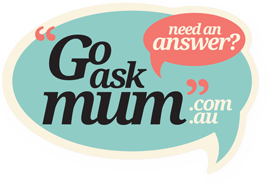Winter always brings out the worst illnesses in kids. It’s the season where the clear, yellow and green boogers make their appearance.
The sicknesses can range from a sore throat to conjunctivitis to the typical cold and flu, to the viral gastro or the dreaded middle ear infection.
When a young child has green snail trails coming from their nose and they have a persistent temperature and they don’t look very well, it’s usually a sign to go and see the GP to make sure there are no infections and get a possible script for antibiotics.
But the Royal Australia College of General Practitioners has partnered with Choosing Wisely Australia® to encourage parents to actively discuss whether the prescription of antibiotics for middle ear infections is the appropriate course of action.
RACGP President Dr Frank R Jones said, “GPs understand the deep concern parents feel when their child is unwell or in pain. No parent—and no doctor—wants to see a child in pain. The best way to manage the pain associated with an ear infection is by giving simple analgesics (like paracetamol), carefully adhering to dosage guidelines according to body weight. Antibiotics will have no effect on easing pain and may in fact have unwarranted side effects like diarrhoea.
“Parents and carers should have a conversation with their GP around the most appropriate treatment for their child, which in all probability will not be an antibiotic prescription.”
The biggest concern around the prescription of antibiotics is the increase in resistance. Middle ear infections affect one in ten children in Australia each year. Antibiotics are usually the most asked for medication by parents when visiting their GP for medical assistance to help clear a middle ear infection.
Dr Lynn Weekes, NPS MedicineWise CEO said “Using antibiotics when you don’t need them can contribute to bacterial resistance, both in the individual and the community.
“The more antibiotics we use, the more chances bacteria have to become resistant to them and as a result they will lose their power.”
NPS Medicine Wise has started the Choosing Wisely Australia® initiative to spark conversations in Australia on the best use of healthcare resources.
They believe there are five questions all parents should ask their GP before a script for antibiotics is prescribed.
Do I (or my child) really need this test, prescription or procedure?
What are the side-effects or risks?
Are there simpler, safer options?
What happens if I don’t do anything?
What are the costs?
The RACGP recommends that antibiotics should not be routinely used in children with an ear infection between two and 12 years of age. Most ear infections clear up within a couple of days.
Dr Jones explains, “Your family doctor is the best source of information on treatment and if the symptoms last more than a couple of days. If the child shows signs of more severe infection, for example increased lethargy, or if the child is under two years or of Aboriginal and Torres Straits Islander origin, your GP is your first point of call.”
All information in this post has been compiled directly from the source. If you require more information, please check out the recommendations here.











One thought on “Treating Kids’ Winter Illnesses With Antibiotics is Doing More Harm Than Good”